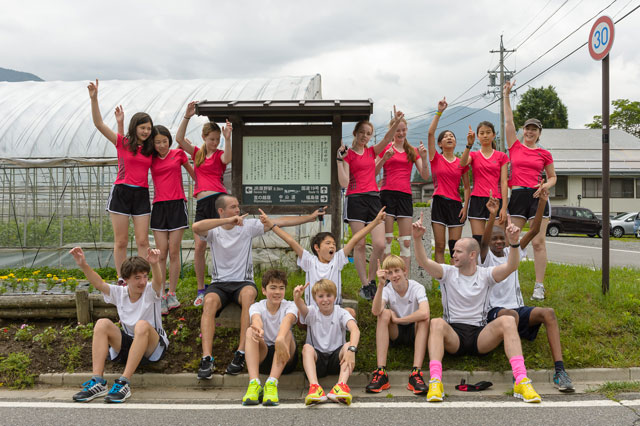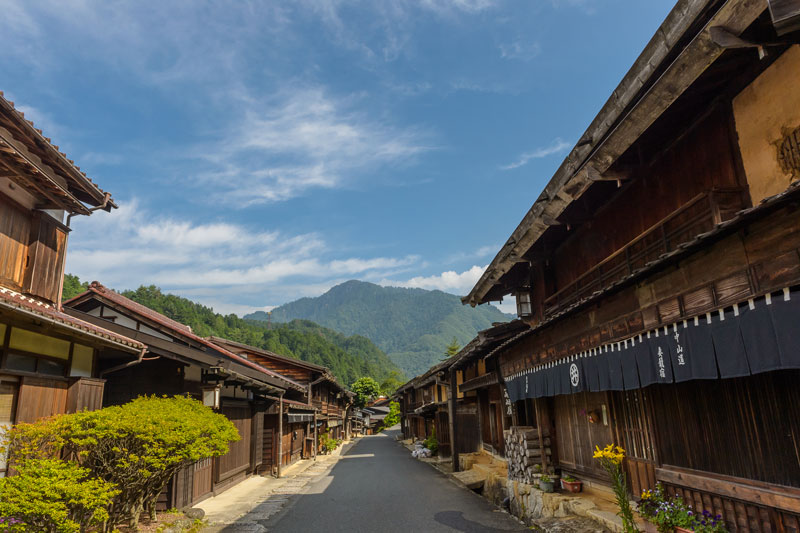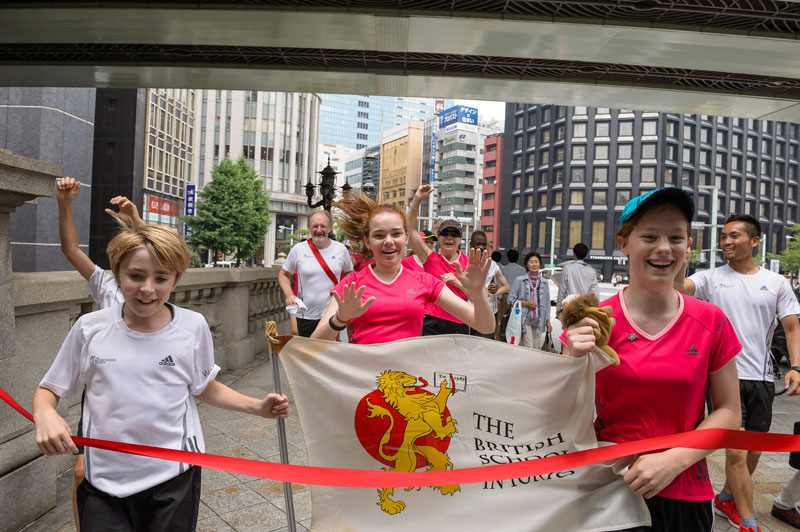It is dark. It is raining. The occasional vehicle sweeps past, splashing up rainbows of spray beneath the streetlights.
By Brian Christian
It is four o’clock in the morning and a motley crew of slightly dazed students and teachers from the British School in Tokyo are huddled together at one end of an ancient bridge in Kyoto. They are about to find out if a crazy idea can possibly be made to work. They are preparing to run the Nakasendo Way.
It had all started months earlier with one of those what-if conversations. I had just met Paul Christie of Walk Japan and we were throwing around some thoughts about ways in which we could work together to do something special for BST’s 25th Anniversary: something that would involve students of different ages and open their eyes to the beauty and fascinating history of a Japan beyond the urban sprawl of Tokyo. Paul waxed lyrical about the Nakasendo Way, the ancient route from Kyoto to Tokyo through the Kiso Valley and over the Japanese Alps. It is a 360-mile journey from post town to post town that had reached the peak of its popularity in the Edo period and which probably hadn’t been covered in its entirety for a century or more. We couldn’t possibly take on something like that, could we? Could we?
A few months later, at the beginning of July, we were about to find out. Just like the Emperor’s elite messengers and countless merchants and pilgrims all those years ago, we were going to journey from Sanjo Ohashi in Kyoto to Tokyo’s Nihonbashi—and we were going to do it as an ekiden (a relay) in a little over five days.
What followed exceeded all of our expectations. The 16 students taking part, boys and girls, ranged in age from 12 through to 18 while the teachers and parents included the young and fit as well as the rather worn and decrepit—me! At
times it was tough, but there were so many highlights: getting up before dawn and reaching a mountain pass by sunrise or jogging along quiet country roads through immaculate rice fields; an early morning run down a deserted post town street; or watching fireflies by the river after a traditional Japanese supper. And, of course, there was the finish: the welcome on Nihonbashi, the whole school lined up to cheer us home on our return to Showa, filled with the glow of accomplishment.
We did it—but it would never have happened without Paul, Mario, Mayumi and Yohei from Walk Japan. From start to finish it was a massively complicated logistical and physical challenge, and without their know-how, their limitless enthusiasm, determination and good humor we would never have carried it off. The last word must go to Paul Christie who was the architect of what will undoubtedly prove to be an unforgettable experience for all of us:
What an adventure! Let me offer a heartfelt thank you to all in the BST/WJ team. This is how the world should work: productive and inspirational —and so much fun!
Brian Christian is the Principal of The British School in Tokyo.
Photos courtesy of www.37framesphotographyblog.com











